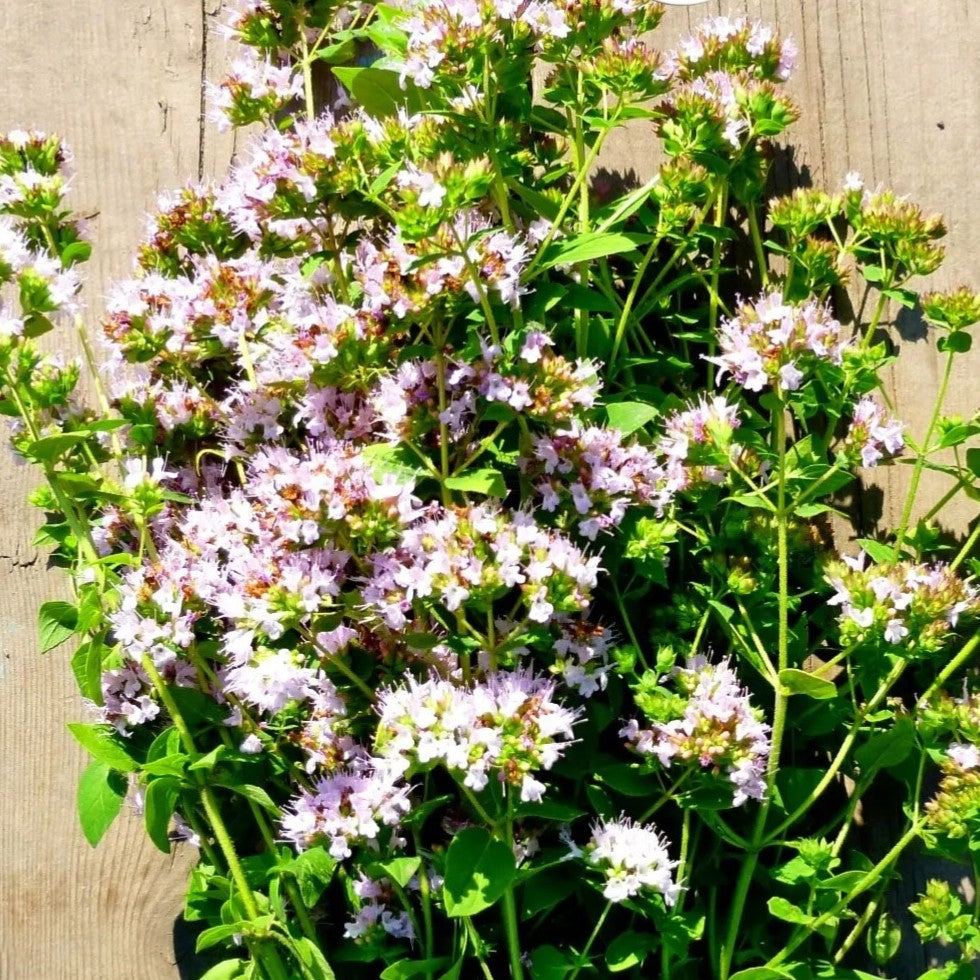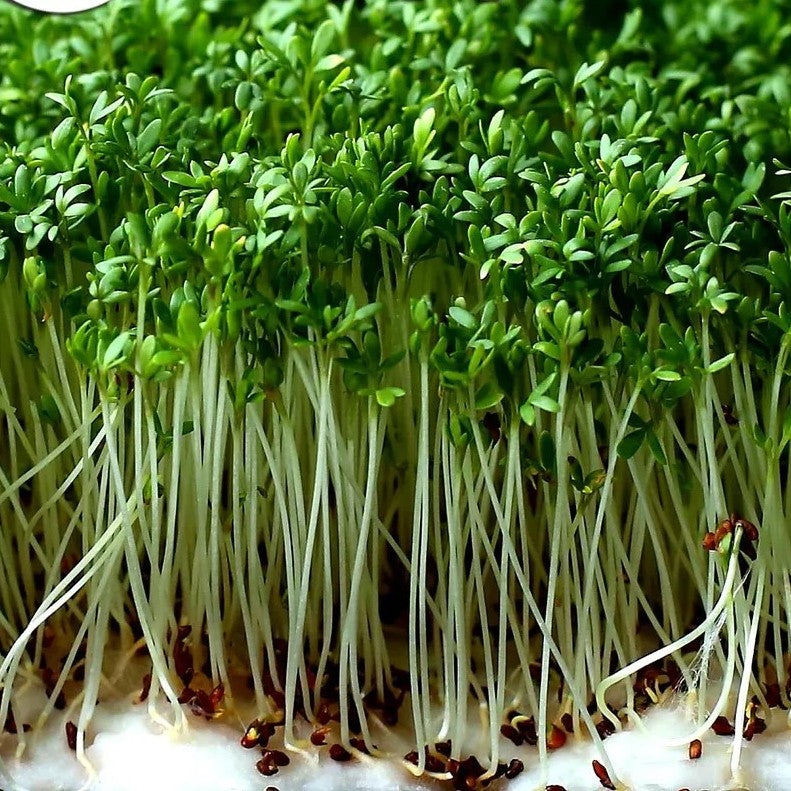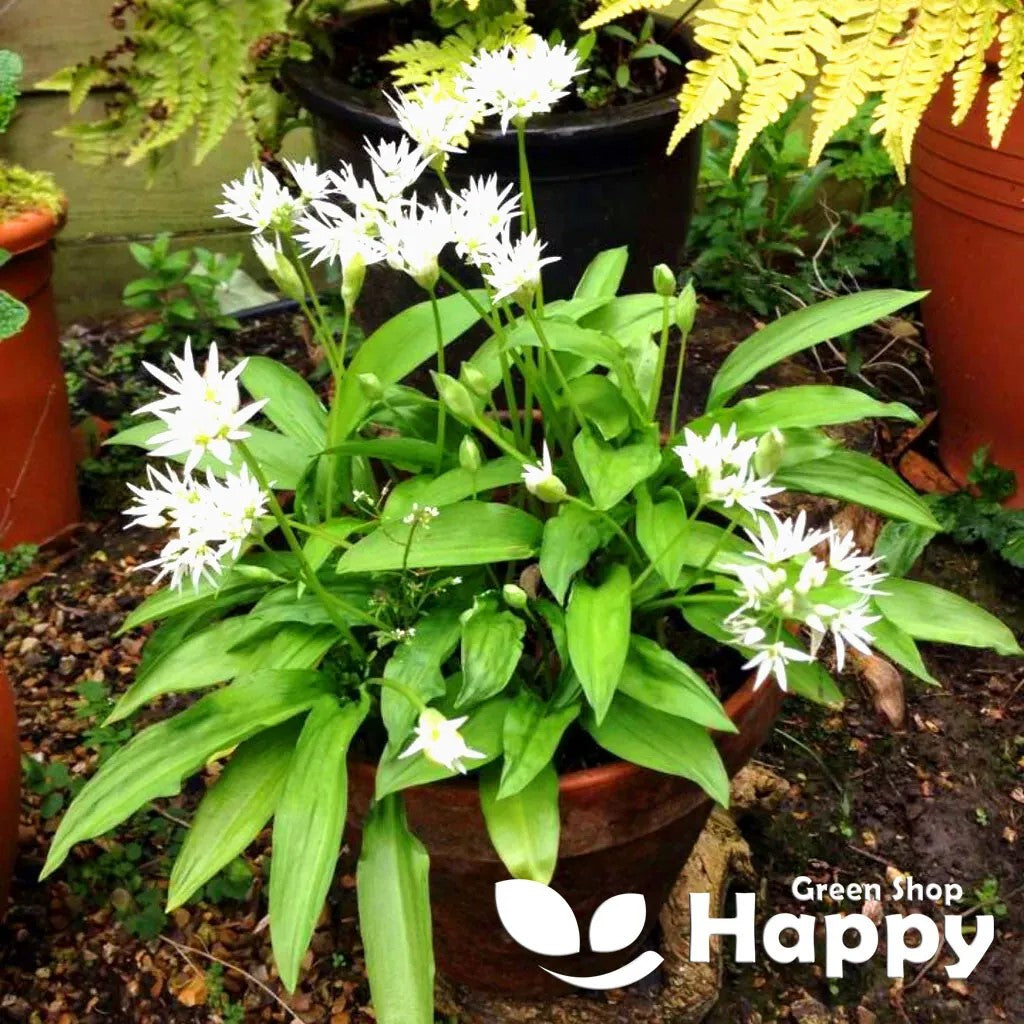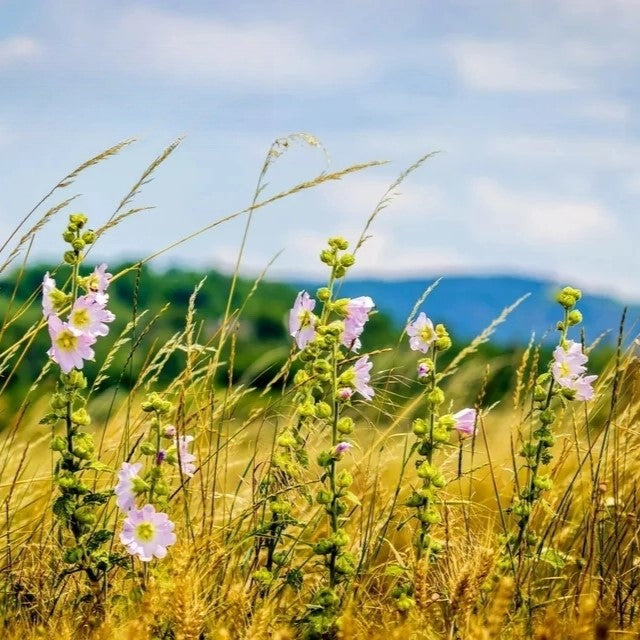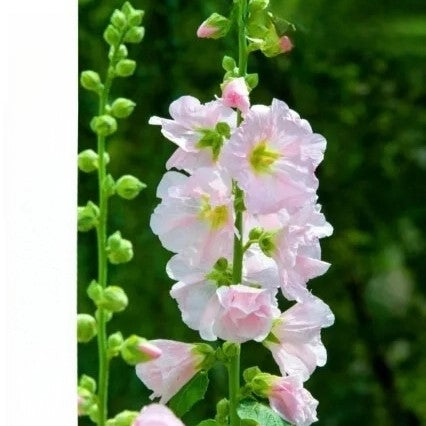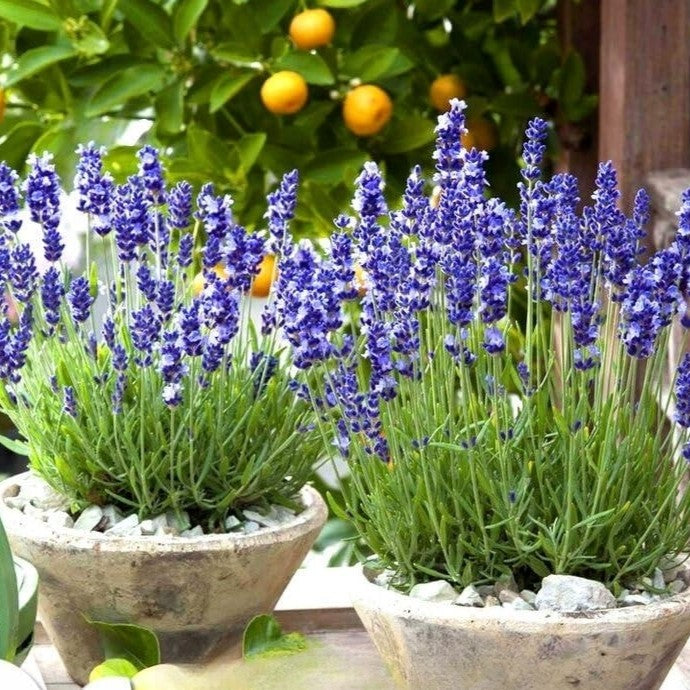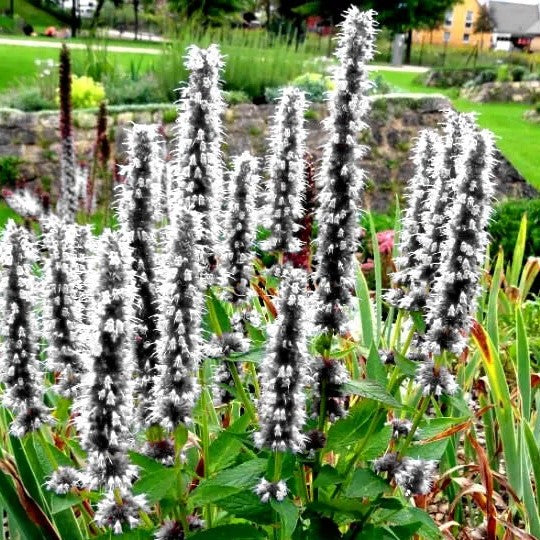Sort by:
26 products
26 products
Ramsons Wild Garlic – Seeds (Allium ursinum)
Ramsons Wild Garlic is a hardy perennial herb prized for its aromatic, garlicky leaves. Perfect for adding fresh, vibrant flavor to salads, pestos, soups, and sauces, it is a versatile addition to any herb or woodland garden. Its delicate white flowers also provide ornamental interest and attract pollinators.
This low-maintenance plant thrives in shaded, moist areas and can naturalize over time, creating a fragrant ground cover in suitable conditions.
How to Grow
-
Sow indoors: January – March
-
Sow outdoors: March – May
-
Depth: 0.5–1 cm
-
Spacing: 20–25 cm between plants
-
Position: Partial to full shade, woodland-type environment
-
Soil: Moist, fertile, well-drained
-
Watering: Keep soil consistently moist, especially during dry spells
Key Features
-
Hardy perennial with aromatic, garlicky leaves
-
Ideal for salads, pestos, soups, and sauces
-
Attractive white flowers that attract pollinators
-
Low-maintenance, naturalizes well in shaded areas
-
Thrives in moist, fertile, well-drained soils
Harvest
-
Harvesting period: March – May
-
Pick young leaves before flowering for the best flavor.
Short Tip
Avoid harvesting all leaves at once; leave some for continued growth and flowering.
Marsh Mallow – Seeds (Althaea officinalis)
Marsh Mallow is a hardy perennial herb known for its tall, elegant growth and soft, velvety leaves. Traditionally valued for its medicinal properties, its roots and leaves can be used in herbal remedies, teas, and natural skincare preparations. The plant also produces attractive pale pink flowers that add charm to herb and cottage gardens.
Ideal for garden beds, borders, and natural herbal plots, Marsh Mallow is easy to grow and low-maintenance once established.
How to Grow
-
Sow indoors: February – April
-
Sow outdoors: April – May
-
Depth: 0.5–1 cm
-
Spacing: 40–50 cm between plants
-
Position: Full sun to partial shade
-
Soil: Fertile, well-drained, moist
-
Watering: Regular watering until established
Key Features
-
Hardy perennial herb with medicinal and culinary uses
-
Soft, velvety leaves and pale pink flowers
-
Ideal for teas, herbal remedies, and natural skincare
-
Low-maintenance once established
-
Suitable for herb gardens, borders, and cottage gardens
Harvest
-
Harvesting period: Summer – Autumn
-
Pick leaves and flowers as needed; roots can be harvested in autumn for medicinal use.
Short Tip
For a continuous supply, harvest leaves selectively and leave some to flower for seeds.
Lovage Seeds (Levisticum officinale)
Grow a robust, aromatic herb with Lovage (Levisticum officinale). This perennial produces tall, leafy stems with a strong celery-like flavor, perfect for soups, stews, stocks, and herbal infusions. Hardy and long-lived, it’s ideal for herb gardens, perennial beds, and pollinator-friendly plantings.
How to Grow
-
Sow seeds indoors 6–8 weeks before the last frost or directly outdoors in spring.
-
Use fertile, well-drained soil in full sun to partial shade.
-
Sow seeds 0.5–1 cm deep and thin seedlings to 40–50 cm apart.
-
Keep soil consistently moist until germination (14–21 days).
-
Transplant seedlings outdoors after frost risk has passed.
-
Harvest leaves and stems as needed; roots can be harvested in autumn.
Key Features
-
Tall, leafy perennial with strong celery-like flavor
-
Hardy, long-lived, and easy to grow
-
Ideal for soups, stews, stocks, and herbal infusions
-
Attracts pollinators and enhances garden biodiversity
-
Suitable for herb gardens, perennial beds, and companion planting
Ideal For
-
Herb gardens and kitchen beds
-
Culinary use in soups, stews, stocks, and teas
-
Perennial borders and pollinator-friendly plantings
-
Long-term herb cultivation with minimal maintenance
Sowing
-
Best time: Spring indoors or outdoors after frost
-
Depth: 0.5–1 cm
-
Spacing: Thin to 40–50 cm apart
-
Prefers full sun to partial shade and fertile, well-drained soil
Quick Tip
-
Regularly trim leaves to encourage bushier growth and a continuous supply throughout the season.
Lemon Balm – Seeds (Melissa officinalis)
Lemon Balm is a hardy perennial herb valued for its refreshing lemon-scented leaves. Perfect for teas, desserts, and savory dishes, it also makes a soothing herbal remedy often used to promote relaxation. Its fragrant foliage attracts bees and pollinators, while its resilience makes it an easy-to-grow choice for gardens, pots, or borders.
How to Grow
-
Sow indoors: March – May in trays at 18–20°C.
-
Sow outdoors: May – July in a sunny or lightly shaded spot.
-
Thin or transplant seedlings to 30 cm apart.
-
Prefers fertile, well-drained soil.
-
Cut back after flowering to encourage fresh growth.
Key Features
-
Hardy perennial with refreshing lemon scent
-
Aromatic leaves for teas, salads, and cooking
-
Excellent for herbal remedies and relaxation
-
Attracts bees and pollinators
-
Easy to grow in borders or containers
Ideal For
-
Herbal teas and drinks
-
Culinary use in sweet and savory dishes
-
Herb gardens, borders, and patio pots
Sowing & Harvest
-
Sow: March – July
-
Harvest: May – October
Quick Tip
Pick leaves early in the morning for the best flavor and fragrance.
Lavender ‘Hidcote’ Blue – Seeds (Lavandula angustifolia)
Lavender ‘Hidcote’ Blue (Lavandula angustifolia) is a classic compact variety prized for its deep violet-blue flower spikes and aromatic foliage. Ideal for borders, herb gardens, and containers, it attracts bees and butterflies while providing fragrant blooms for cutting and drying. Hardy and low-maintenance, it’s perfect for sunny, well-drained locations.
Why Grow "Hidcote Blue"
-
Deep violet-blue fragrant flower spikes
-
Compact, tidy growth ideal for borders and containers
-
Attracts pollinators such as bees and butterflies
-
Excellent for cutting, drying, and culinary use
Key Features
-
Type: Hardy perennial (Lavandula angustifolia)
-
Height: 30–45 cm
-
Flowering: June–August
-
Position: Full sun, well-drained soil
-
Uses: Borders, herb gardens, containers, pollinator-friendly planting
Ideal For
-
Herb and cottage gardens
-
Pollinator-friendly borders
-
Container planting and edging
-
Fragrant bouquets and dried arrangements
Sowing & Growing
-
Sow indoors: February–April in seed trays
-
Germination: 14–28 days at 18–22°C
-
Transplant seedlings into pots or borders after last frost
-
Space 25–30 cm apart for compact growth
-
Prefers sunny, well-drained soil; avoid overwatering
Hyssop Seeds (Hyssopus officinalis)
Grow a timeless herb with Hyssop (Hyssopus officinalis), a fragrant perennial prized for its aromatic leaves and striking blue-purple flowers. Traditionally used in herbal teas, remedies, and as a seasoning, hyssop also attracts pollinators and adds beauty to borders, herb gardens, and containers. Hardy and versatile, it’s an essential plant for both culinary and medicinal use.
How to Grow
-
Sow seeds indoors in spring or directly outdoors after the last frost.
-
Use well-drained, light soil in a sunny location.
-
Sow seeds 0.5 cm deep and thin seedlings to 30–40 cm apart.
-
Keep soil lightly moist until germination (14–21 days).
-
Harvest leaves and flowers throughout summer for fresh or dried use.
Key Features
-
Aromatic herb with blue-purple blooms
-
Culinary, medicinal, and herbal tea uses
-
Attracts bees, butterflies, and pollinators
-
Hardy perennial, easy to grow
-
Adds beauty and fragrance to the garden
Ideal For
-
Herb gardens, borders, and containers
-
Herbal teas, remedies, and cooking
-
Attracting pollinators and beneficial insects
-
Gardeners seeking hardy, multipurpose plants
Sowing
-
Best time: Spring indoors or after frost outdoors
-
Depth: 0.5 cm
-
Spacing: 30–40 cm apart
-
Prefers full sun and well-drained soil
Quick Tip
-
Trim plants after flowering to encourage bushier growth and a second flush of blooms.
Herb Sage – Seeds
(Salvia officinalis)
Herb Sage is a hardy perennial herb prized for its aromatic leaves and culinary versatility. Perfect for seasoning meats, soups, and sauces, its gray-green foliage also adds texture and fragrance to herb gardens. Easy to grow and drought-tolerant once established, it attracts pollinators and enhances both edible and ornamental plantings.
Why Grow Herb Sage?
-
Aromatic leaves for culinary and medicinal use
-
Hardy perennial, drought-tolerant once established
-
Attracts bees and pollinators
-
Adds texture and fragrance to gardens
Key Features
-
Type: Perennial herb
-
Height: 30–60 cm
-
Flowers: Blue-purple, late spring to summer
-
Position: Full sun
-
Soil: Well-drained, moderately fertile
Ideal For
-
Herb and culinary gardens
-
Pollinator-friendly plantings
-
Containers, borders, and rockeries
-
Perennial garden beds
Sowing & Growing
-
Sow indoors: February–April in seed trays
-
Sow outdoors: April–May directly in prepared soil
-
Germination: 14–21 days at 18–20°C
-
Spacing: 25–30 cm apart
-
Care: Moderate watering; prune after flowering to encourage fresh growth
Herb Licorice – Seeds (Glycyrrhiza glabra)
Description:
Grow your own natural sweetener and medicinal herb with Herb Licorice (Glycyrrhiza glabra). This hardy perennial produces long roots renowned for their sweet flavor and traditional herbal uses. With attractive feathery foliage and pale blue-lavender flowers, licorice is both decorative and useful in the garden. Ideal for herb gardens and natural remedy enthusiasts, it thrives in sunny, well-drained soil and rewards patience with valuable roots after two to three years of growth.
Key Features
-
Perennial herb with sweet, aromatic roots
-
Pale blue-lavender summer flowers
-
Valued for culinary and medicinal purposes
-
Attractive feathery foliage
-
Long-lived and easy to maintain once established
Ideal For
-
Herb and medicinal gardens
-
Cottage and wildlife gardens
-
Edible landscapes
-
Homegrown natural remedies
Sowing & Growing
-
Sow Indoors: February–April
-
Transplant Outdoors: May–June
-
Germination: 14–21 days at 18–22°C
-
Spacing: 45–60 cm apart
-
Height: 90–120 cm
-
Light: Full sun
-
Soil: Deep, fertile, well-drained
Care Tips
-
Water regularly during dry periods
-
Harvest roots after 2–3 years of growth
-
Mulch to retain soil moisture
-
Protect from frost in colder climates
Giant Hyssop White – Seeds (Agastache mexicana)
Giant Hyssop White (Agastache mexicana) is a stunning perennial that produces elegant white flower spikes with a delicate fragrance. Blooming from summer to early autumn, its aromatic foliage and nectar-rich flowers are a magnet for bees, butterflies, and hummingbirds. Hardy, drought-tolerant, and easy to grow, it adds vertical structure, fragrance, and brightness to borders, herb gardens, and pollinator-friendly plantings.
Why Grow "Giant Hyssop White"
-
Tall spikes of elegant white flowers
-
Fragrant foliage with a long flowering season
-
Hardy, drought-tolerant, and low-maintenance
-
Highly attractive to pollinators
Key Features
-
Type: Perennial (Agastache mexicana)
-
Height: 60–100 cm
-
Flowering: Summer to early autumn
-
Position: Full sun
-
Uses: Borders, herb gardens, cottage gardens, pollinator planting
Ideal For
-
Adding height and brightness to borders
-
Pollinator-friendly and wildlife gardens
-
Cottage-style and herb gardens
-
Drought-tolerant, easy-care planting
Sowing & Growing
-
Sow indoors: February–April in trays or pots
-
Sow outdoors: April–May after frost
-
Germination: 14–21 days at 18–22°C
-
Thin seedlings 25–30 cm apart
-
Prefers well-drained soil in full sun
-
Water sparingly once established
Showing 18/26


